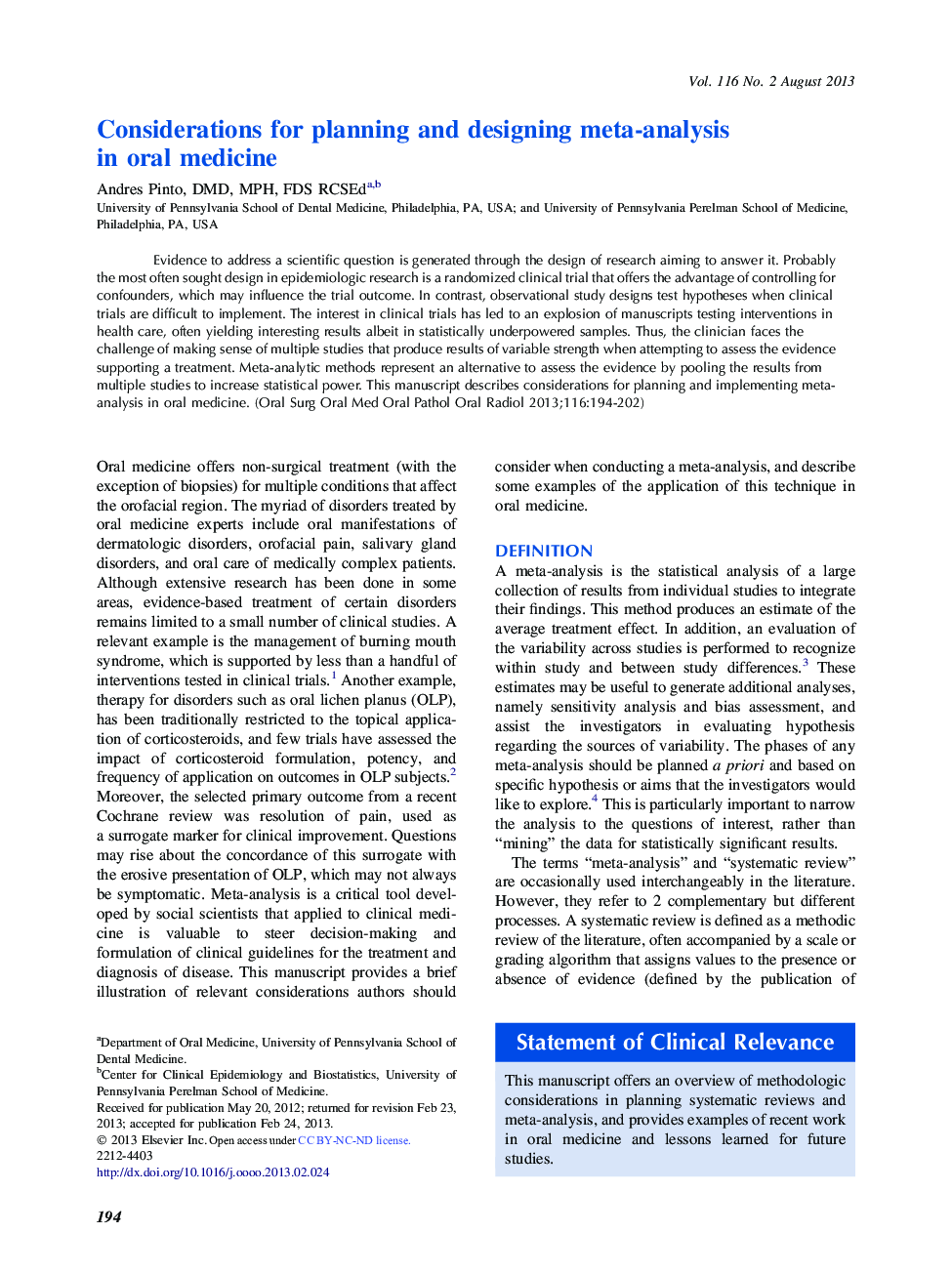| کد مقاله | کد نشریه | سال انتشار | مقاله انگلیسی | نسخه تمام متن |
|---|---|---|---|---|
| 6056783 | 1199145 | 2013 | 9 صفحه PDF | دانلود رایگان |
Evidence to address a scientific question is generated through the design of research aiming to answer it. Probably the most often sought design in epidemiologic research is a randomized clinical trial that offers the advantage of controlling for confounders, which may influence the trial outcome. In contrast, observational study designs test hypotheses when clinical trials are difficult to implement. The interest in clinical trials has led to an explosion of manuscripts testing interventions in health care, often yielding interesting results albeit in statistically underpowered samples. Thus, the clinician faces the challenge of making sense of multiple studies that produce results of variable strength when attempting to assess the evidence supporting a treatment. Meta-analytic methods represent an alternative to assess the evidence by pooling the results from multiple studies to increase statistical power. This manuscript describes considerations for planning and implementing meta-analysis in oral medicine.
Journal: Oral Surgery, Oral Medicine, Oral Pathology and Oral Radiology - Volume 116, Issue 2, August 2013, Pages 194-202
